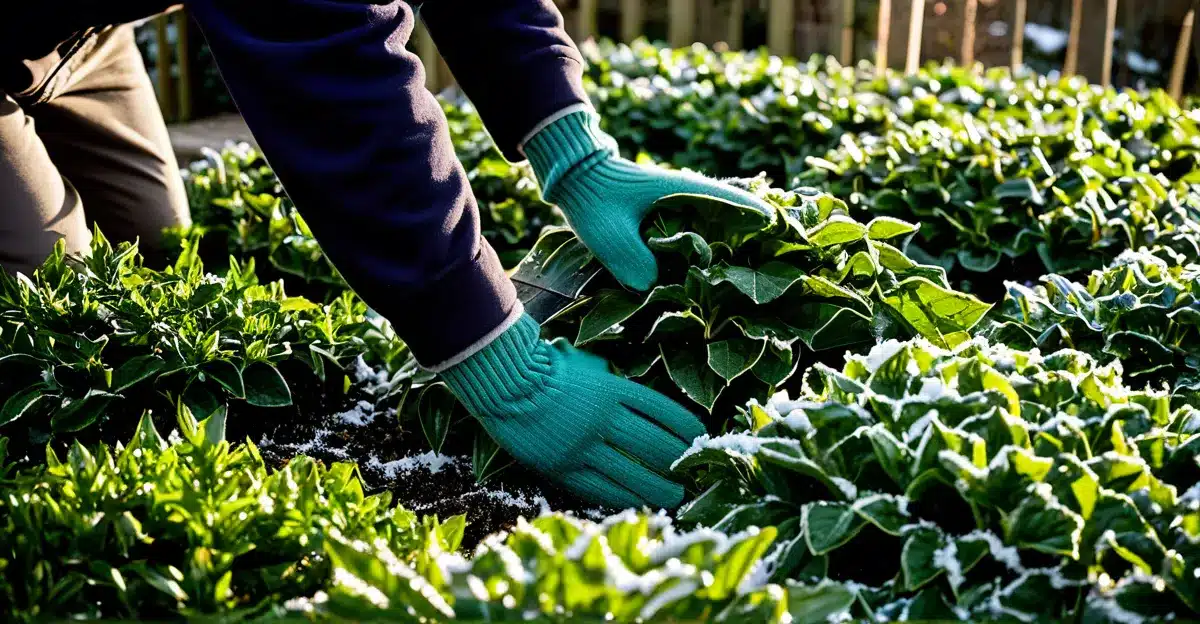Essential Steps for Winter-Proofing Your UK Garden
Winter garden preparation in the UK demands special attention to the unique challenges posed by frost, rain, and wind. These elements can severely impact your plants and soil health if not properly managed. Start by assessing your garden’s vulnerabilities: identify exposed plants prone to frost damage, check drainage in areas susceptible to waterlogging, and note spots where strong winds might strip foliage or dry out soil.
Creating a detailed winter gardening checklist UK is crucial. This should include tasks such as mulching beds, pruning dead or fragile branches, and covering tender plants with fleece or horticultural fabric. A systematic checklist also ensures timely action before the harshest weather sets in, keeping your garden ready and resilient.
Also to see : How can I create a garden retreat in my UK backyard?
Gathering the right winter gardening tools significantly eases your garden winter preparation. Essential items include sturdy gloves, pruning shears for precise cuts, and protective covers. Additionally, a good-quality garden fork helps aerate compacted soil weakened by cold and moisture. Organising these tools beforehand saves time and effort during the critical winter months.
By focusing on these core areas—assessing vulnerabilities, preparing a meticulous checklist, and equipping yourself with proper tools—you effectively safeguard your garden and enjoy a thriving outdoor space year-round.
Additional reading : How Can You Successfully Grow Vegetables in a UK Garden?
Protecting Plants from Harsh Winter Conditions
Maintaining healthy plants during the colder months requires strategic frost protection and attentive winter plant care UK gardeners can rely on. To protect plants in winter effectively, one practical approach is using fleece, cloches, and cold frames. These coverings create a microclimate that traps warmth around delicate species, shielding them from cold winds and frost. For tender plants, these methods reduce exposure to freezing temperatures and prevent frost damage that can stunt growth or cause death.
Another key technique involves grouping pots together and relocating tender plants to sheltered locations such as porches or conservatories. By clustering pots, you create a mass that retains heat more efficiently than individual containers. Moving plants closer to buildings or under roof overhangs offers natural protection from icy winds and precipitation, greatly enhancing survival rates through the coldest periods.
When planning your garden with long-term winter resilience, choosing hardy plant varieties suited to the UK climate significantly eases winter plant care UK horticulturists recommend. Opting for species that thrive in low temperatures reduces the need for constant interventions and guarantees better growth once spring arrives. Combining practical frost protection with climate-appropriate plant selection is the best way to protect plants in winter reliably.
Mulching and Soil Care for Winter
Mulching garden for winter is a crucial step in winter soil care that helps protect plant roots from freezing temperatures and reduces soil erosion caused by harsh weather. By applying a thick layer of organic mulch, such as shredded leaves or bark, around plants, you create an insulating barrier that stabilizes soil temperature. This layer also preserves moisture, which is especially important during dry spells in the cold months.
Improving soil drainage is another key component of effective garden maintenance UK winter. The UK often experiences heavy rainfall during winter, which can lead to waterlogged soil and root rot. To combat this, gardeners should lightly cultivate the soil and incorporate coarse organic matter to enhance drainage. This allows excess water to drain away efficiently and reduces the risk of damage to plant roots.
Replenishing nutrients before winter is essential for preparing your garden for the coming season. Adding compost or well-rotted manure enriches the soil, boosts its fertility, and supports beneficial microbial activity during the cold months. This step ensures that the garden remains healthy and ready for robust growth when spring arrives. Incorporating these practices into your mulching garden for winter routine supports strong plant health and a resilient soil ecosystem during the challenging UK winter weather.
Winter Lawn Care Essentials
Taking care of your lawn during the colder months is crucial to ensure it stays healthy and green. For effective winter lawn care UK, understanding the unique challenges winter poses is essential. Managing moss, weeds, and compacted soil is a top priority as these problems worsen in damp, cold conditions.
Moss thrives in shaded, damp areas and weak lawns, so regular treatment is necessary. Using a moss killer in autumn helps control its spread. Likewise, weeds become more resilient, so applying targeted weed control following lawn care advice can keep them at bay. Compacted soil restricts root growth and water absorption; therefore, aerating your lawn before winter—by using a garden fork or mechanical aerator—improves soil drainage and helps roots access nutrients.
When it comes to lawn tips for winter, mowing and feeding practices shift. Mowing should be reduced in frequency, cutting only when the grass is dry and at a higher blade height (around 3-4 cm) to protect the grass tips. Feeding your lawn with a winter feed high in potassium strengthens the grass to withstand frost and disease. Avoid nitrogen-heavy fertilizers during winter, as they stimulate growth that won’t survive the cold.
Foot traffic during wet or frosty conditions can cause significant damage by compacting the soil further and tearing fragile grass blades. Reducing foot traffic on vulnerable parts of your lawn during these times is advisable to maintain a robust lawn structure. Consider setting up pathways or encouraging use of other areas until conditions improve.
Preparing your lawn for winter involves combining these strategies to maintain vigor through challenging weather. Implementing these winter lawn care UK steps ensures your lawn emerges healthy in spring, ready to flourish once warmer temperatures return.
Safeguarding Garden Furniture and Structures
Protecting garden furniture during the winter is essential to maintain its condition and extend its lifespan. To protect garden furniture winter, start by thoroughly cleaning all surfaces to remove dirt and debris. This prevents mold and mildew buildup, which can cause long-term damage. Once clean, use fitted covers that are waterproof and breathable; these are especially important for soft cushions and delicate materials. If possible, store lightweight or portable pieces indoors to shield them from harsh weather.
For outdoor furniture care UK, pay special attention to wood and metal surfaces. Wooden furniture benefits from an annual application of a weatherproof sealant or oil, which helps repel moisture and prevent cracking. Metal pieces should be checked for rust; treating rusty spots with a rust remover and repainting the area can help maintain durability. Winter-proofing garden structures requires similar vigilance — inspecting sheds, fences, and greenhouses for any loose panels or broken glass is crucial. Secure any vulnerable points to prevent damage during storms or strong winds common in the UK winters.
Regular maintenance, combined with proper covering and storage, forms a comprehensive approach to winter-proofing garden structures and furniture, reducing the need for costly repairs and replacements.
Practical Advice for All Experience Levels
Winter gardening in the UK poses unique challenges, but with the right approach, both beginners and experts can protect their gardens effectively. For those new to gardening, focusing on simple winter proofing techniques is essential. Start by mulching borders and pots to insulate roots and prevent frost damage. Watering should be adjusted because plants need less moisture, but ensuring soil doesn’t dry out completely is crucial during cold spells.
Expert gardeners often employ more advanced strategies that go beyond basic protection. These include installing fleece or cloches to create microclimates, using windbreaks to shield fragile plants, and planning crop rotations that consider winter resilience. Some even implement cold frames or greenhouses to extend growing seasons. These techniques help professional UK gardeners maintain plant health and productivity despite harsh weather.
Creating a winter gardening checklist tailored to your garden’s specific needs ensures nothing important gets overlooked. This checklist might prioritize clearing debris to deter pests, securing supports for tall plants vulnerable to winter storms, and scheduling deadheading or pruning based on plant species resilience. Whether you’re a beginner or expert, following a well-structured winter gardening checklist encourages consistent care and protects your plants throughout the season.


